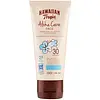What's inside
What's inside
 Key Ingredients
Key Ingredients

 Benefits
Benefits

 Concerns
Concerns

 Ingredients Side-by-side
Ingredients Side-by-side

Water
Skin ConditioningDicaprylyl Carbonate
EmollientButylene Glycol
HumectantDibutyl Adipate
EmollientDiethylamino Hydroxybenzoyl Hexyl Benzoate
UV FilterHydrogenated Polyisobutene
Emollient1,2-Hexanediol
Skin ConditioningGlycerin
HumectantNiacinamide
SmoothingEthylhexyl Triazone
UV AbsorberPolyglyceryl-3 Methylglucose Distearate
EmulsifyingSilica
AbrasiveCetearyl Olivate
Cetearyl Alcohol
EmollientSorbitan Olivate
EmulsifyingGlyceryl Stearate Se
EmulsifyingMethyl Glucose Sesquistearate
EmollientSorbitan Stearate
EmulsifyingPanthenol
Skin ConditioningBeta-Glucan
Skin ConditioningDisodium EDTA
Citrus Junos Fruit Extract
Skin ConditioningAdenosine
Skin ConditioningSodium Hyaluronate
HumectantAnthemis Nobilis Flower Oil
MaskingHippophae Rhamnoides Oil
EmollientCaprylyl Glycol
EmollientEthylhexylglycerin
Skin ConditioningTocopherol
AntioxidantAllantoin
Skin ConditioningCitrus Aurantium Dulcis Oil
MaskingWater, Dicaprylyl Carbonate, Butylene Glycol, Dibutyl Adipate, Diethylamino Hydroxybenzoyl Hexyl Benzoate, Hydrogenated Polyisobutene, 1,2-Hexanediol, Glycerin, Niacinamide, Ethylhexyl Triazone, Polyglyceryl-3 Methylglucose Distearate, Silica, Cetearyl Olivate, Cetearyl Alcohol, Sorbitan Olivate, Glyceryl Stearate Se, Methyl Glucose Sesquistearate, Sorbitan Stearate, Panthenol, Beta-Glucan, Disodium EDTA, Citrus Junos Fruit Extract, Adenosine, Sodium Hyaluronate, Anthemis Nobilis Flower Oil, Hippophae Rhamnoides Oil, Caprylyl Glycol, Ethylhexylglycerin, Tocopherol, Allantoin, Citrus Aurantium Dulcis Oil
Water
Skin ConditioningHomosalate
Skin ConditioningOctocrylene
UV AbsorberEthylhexyl Salicylate
UV AbsorberDiisopropyl Adipate
EmollientButyl Methoxydibenzoylmethane
UV AbsorberSilica
AbrasiveCetearyl Alcohol
EmollientGlycerin
HumectantPhenoxyethanol
PreservativeTapioca Starch
Vp/Eicosene Copolymer
Diethylhexyl Butamido Triazone
UV AbsorberCaprylyl Glycol
EmollientAcrylates/C12-22 Alkyl Methacrylate Copolymer
Acrylates/C10-30 Alkyl Acrylate Crosspolymer
Emulsion StabilisingCeteth-10 Phosphate
CleansingDicetyl Phosphate
EmulsifyingCoco-Glucoside
CleansingParfum
MaskingChlorphenesin
AntimicrobialXanthan Gum
EmulsifyingSodium Hydroxide
BufferingDisodium EDTA
Sea Salt
AbrasivePolymethylsilsesquioxane
Carica Papaya Fruit Extract
Skin ConditioningMangifera Indica Fruit Extract
Skin ConditioningPassiflora Incarnata Fruit Extract
Skin ConditioningPlumeria Acutifolia Flower Extract
Skin ConditioningPsidium Guajava Fruit Extract
AstringentHexyl Cinnamal
PerfumingLinalool
PerfumingWater, Homosalate, Octocrylene, Ethylhexyl Salicylate, Diisopropyl Adipate, Butyl Methoxydibenzoylmethane, Silica, Cetearyl Alcohol, Glycerin, Phenoxyethanol, Tapioca Starch, Vp/Eicosene Copolymer, Diethylhexyl Butamido Triazone, Caprylyl Glycol, Acrylates/C12-22 Alkyl Methacrylate Copolymer, Acrylates/C10-30 Alkyl Acrylate Crosspolymer, Ceteth-10 Phosphate, Dicetyl Phosphate, Coco-Glucoside, Parfum, Chlorphenesin, Xanthan Gum, Sodium Hydroxide, Disodium EDTA, Sea Salt, Polymethylsilsesquioxane, Carica Papaya Fruit Extract, Mangifera Indica Fruit Extract, Passiflora Incarnata Fruit Extract, Plumeria Acutifolia Flower Extract, Psidium Guajava Fruit Extract, Hexyl Cinnamal, Linalool
Ingredients Explained
These ingredients are found in both products.
Ingredients higher up in an ingredient list are typically present in a larger amount.
Caprylyl Glycol is a humectant and emollient, meaning it attracts and preserves moisture.
It is a common ingredient in many products, especially those designed to hydrate skin. The primary benefits are retaining moisture, skin softening, and promoting a healthy skin barrier.
Though Caprylyl Glycol is an alcohol derived from fatty acids, it is not the kind that can dry out skin.
This ingredient is also used as a preservative to extend the life of products. It has slight antimicrobial properties.
Learn more about Caprylyl GlycolCetearyl alcohol is a mixture of two fatty alcohols: cetyl alcohol and stearyl alcohol. It is mainly used as an emulsifier. Emulsifiers help prevent the separation of oils and products. Due to its composition, it can also be used to thicken a product or help create foam.
Cetearyl alcohol is an emollient. Emollients help soothe and hydrate the skin by trapping moisture.
Studies show Cetearyl alcohol is non-toxic and non-irritating. The FDA allows products labeled "alcohol-free" to have fatty alcohols.
This ingredient is usually derived from plant oils such as palm, vegetable, or coconut oils. There is debate on whether this ingredient will cause acne.
Due to the fatty acid base, this ingredient may not be Malassezia folliculitis safe.
Learn more about Cetearyl AlcoholDisodium EDTA plays a role in making products more stable by aiding other preservatives.
It is a chelating agent, meaning it neutralizes metal ions that may be found in a product.
Disodium EDTA is a salt of edetic acid and is found to be safe in cosmetic ingredients.
Learn more about Disodium EDTAGlycerin is already naturally found in your skin. It helps moisturize and protect your skin.
A study from 2016 found glycerin to be more effective as a humectant than AHAs and hyaluronic acid.
As a humectant, it helps the skin stay hydrated by pulling moisture to your skin. The low molecular weight of glycerin allows it to pull moisture into the deeper layers of your skin.
Hydrated skin improves your skin barrier; Your skin barrier helps protect against irritants and bacteria.
Glycerin has also been found to have antimicrobial and antiviral properties. Due to these properties, glycerin is often used in wound and burn treatments.
In cosmetics, glycerin is usually derived from plants such as soybean or palm. However, it can also be sourced from animals, such as tallow or animal fat.
This ingredient is organic, colorless, odorless, and non-toxic.
Glycerin is the name for this ingredient in American English. British English uses Glycerol/Glycerine.
Learn more about GlycerinSilica, also known as silicon dioxide, is a naturally occurring mineral. It is used as a fine, spherical, and porous powder in cosmetics.
Though it has exfoliant properties, the function of silica varies depending on the product.
The unique structure of silica enhances the spreadability and adds smoothness, making it a great texture enhancer.
It is also used as an active carrier, emulsifier, and mattifier due to its ability to absorb excess oil.
In some products, tiny microneedles called spicules are made from silica or hydrolyzed sponge. When you rub them in, they lightly polish away dead skin layers and enhance the penetration of active ingredients.
Learn more about SilicaWater. It's the most common cosmetic ingredient of all. You'll usually see it at the top of ingredient lists, meaning that it makes up the largest part of the product.
So why is it so popular? Water most often acts as a solvent - this means that it helps dissolve other ingredients into the formulation.
You'll also recognize water as that liquid we all need to stay alive. If you see this, drink a glass of water. Stay hydrated!
Learn more about Water